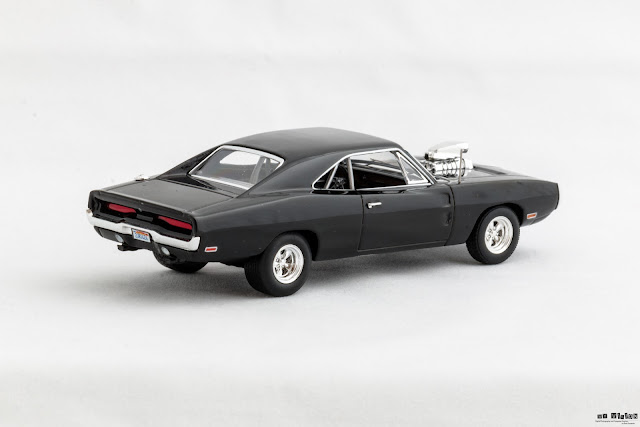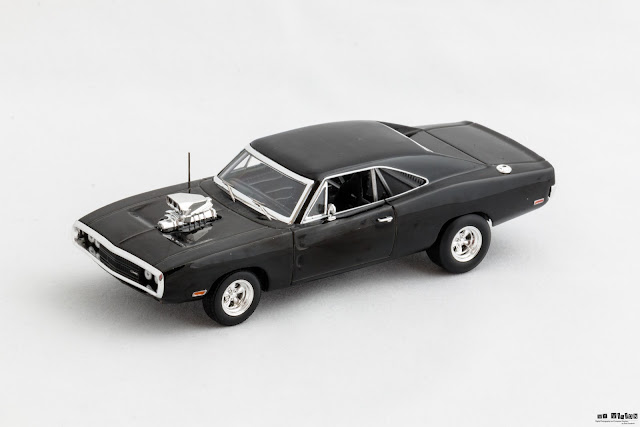Wednesday 5 August 2015
The Dodge Charger is an American automobile whose current version is manufactured in Canada by Dodge. First used on a show car in 1964, there have been several different production vehicles, built on three different platforms and sizes, all bearing the Charger nameplate. The Charger nameplate has been used with subcompact hatchbacks, full-sized sedans, and personal luxury coupes.
During the early-1960s, automakers were exploring new ideas in the personal luxury and specialty car segments. Chrysler, fast to enter the specialty car market, selected their Dodge Division to enter the marketplace with a bigger model to fit between the "pony car" Ford Mustang and the "personal luxury" Ford Thunderbird. The intention was to use the B-body for a sporty car with fastback look while sharing as much of their existing hardware as possible.
The fastback Charger was introduced in mid-season of the 1966 model year "in retaliation to the AMC Marlin, Ford Mustang, and Plymouth Barracuda", but even though based on the existing Coronet, "it was style-wise a complete departure from the Dodge's mainstream cars." The 1965 Rambler Marlin, along with the Dodge Charger that arrived during the 1966 model year, were "the two cars set the standard for radical fastback design in American mid-size automobiles." According to Richard M. Langworth, "because it was an intermediate like the Rambler Marlin, the Charger could have been an aesthetic disaster, but long side windows prevented its sweeping roof from looking too heavy."
Burt Bouwkamp, Chief Engineer for Dodge during the 1960s and one of the men behind the Dodge Charger, related his experience during a speech in July 2004.
Lynn Townsend was at odds with the Dodge Dealers and wanted to do something to please them. So in 1965 he asked me to come to his office - for the second time. He noted that one of the Dodge Dealer Council requests was for a Barracuda type vehicle. The overall dealer product recommendation theme was the same - we want what Plymouth has. The specific request for a Mustang type vehicle was not as controversial to Lynn. His direction to me was to give them a specialty car but he said 'for God's sake don't make it a derivative of the Barracuda': i.e. don't make it a Barracuda competitor.So the 1966 Charger was born."We built a Charger 'idea' car which we displayed at auto shows in 1965 to stimulate market interest in the concept. It was the approved design but we told the press and auto show attendees that it was just an "idea" and that we would build it if they liked it. It was pre-ordained that they would like it."
In 1970, the Charger was changed slightly. This would be the last year of the 2nd generation Charger and featured a large wraparound chrome bumper and the grille was no longer divided in the middle. New electric headlight doors replaced the old vacuum style. The taillights were similar to those used in 69, but 500 and R/T models came with a new more attractive taillight panel. On the R/T, new rear-facing scoops with the R/T logo were mounted on the front doors, over the door scallops. A new 440 or HEMI hood cutout made the option list for this year only.
Dodge painted the hood scallop inserts black and put the silver engine callouts on top. New "High Impact" colors were given names, such as Top Banana, Panther Pink, Sublime, Burnt Orange, Go Mango and Plum Crazy (sometimes nicknamed "Statutory Grape"). The 500 returned for another year, but as a regular production Charger.
Interior changes included new high-back bucket seats, the door panels were also revised and the map pockets were now optional instead of standard. The ignition was moved from the dash to the steering column (as with all Chrysler products this year), and the glove box was now hinged at the bottom instead of the top as in 1968-69. The SE "Special Edition" trim option added luxury features and was available in as the 500 SE and R/T SE models. The all new pistol grip shifter was introduced, along with a bench seat, a first for the Charger since its debut.
A new engine option made the Charger's list for the first time, the 440 Six Pack. With three two-barrel carburetors and a rating of 390 hp (290 kW), it was one of the most exotic setups since the cross-ram Max Wedge engines of the early 1960s. The Six Pack was previously used on the mid-year 1969 Dodge Super Bee and Plymouth Road Runner. Despite this new engine, production slipped again to 46,576 mainly due to the new E-body Dodge Challenger pony car, as well as rapidly increasing automobile insurance rates. In the 1970 NASCAR season, the 1970 Charger had ten wins, more than any other car, including the 1969 Dodge Charger Daytonas and Plymouth Superbirds, thus giving Bobby Isaac the Grand National Championship.
Technical data:
- engine: V8
- capacity: 6300 cc
- horsepower: 300 HP
- gearbox: 4+1
- top speed: 210 km/h







Brak komentarzy:
Prześlij komentarz